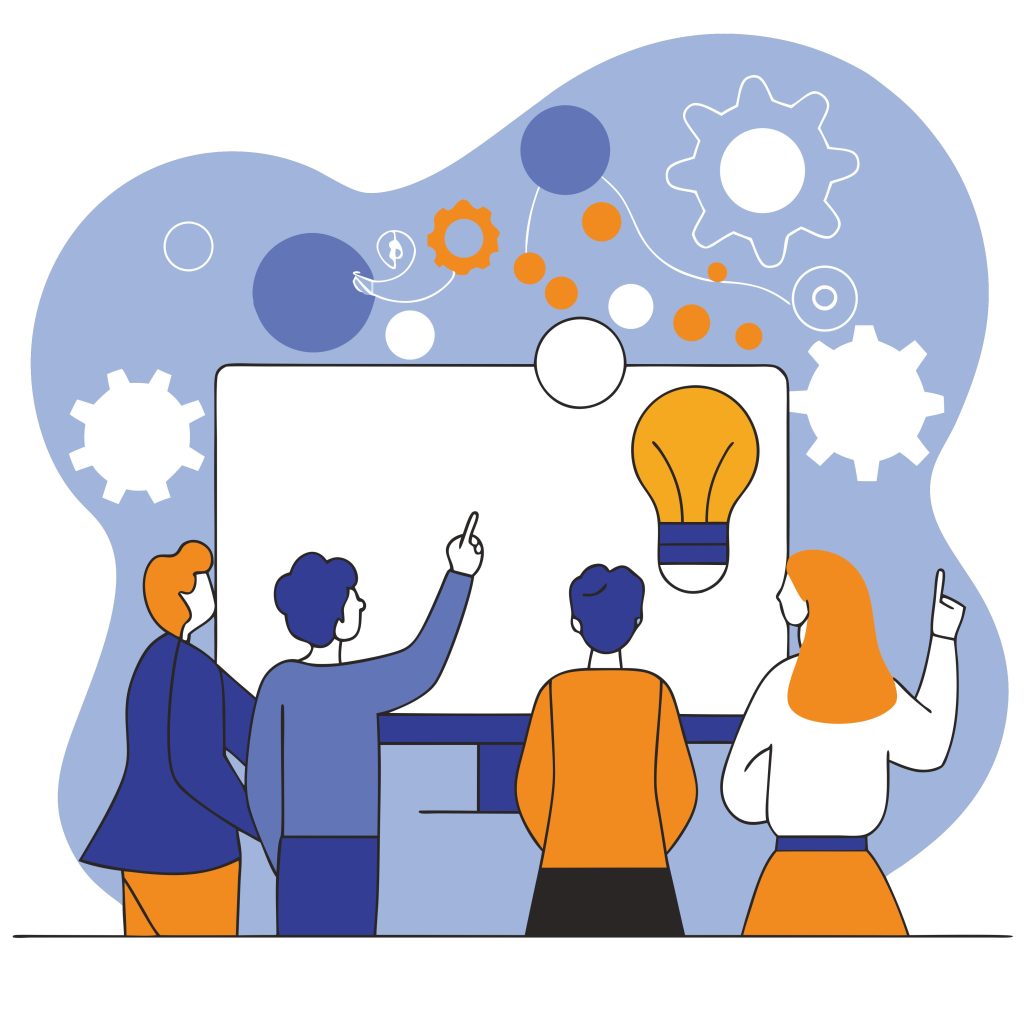As I have been involved in Agile transformation coaching in several organizations over many years, I have been noticing one pattern: Most organizations have been moving from one framework/model to another, say Scrum, LeSS, SAFe, Spotify and so on; but there is not enough change in mindset, behavior, culture towards Agility. They are doing Agile practices/ceremonies, but not living Agile Values & Principles in the spirit. They are DOING Agile, but not BEING Agile.
The primary reason for this, in my view, is that the Leaders think Agile is about only Teams. When they hire coaches, their message to the coaches, though not explicit, is almost like ‘go and fix our Teams’. We emphasize to the Leaders that Agile Transformation is a 50:50 deal – 50% at Team level and 50% at Managers/Leaders level. But that doesn’t go-in so easily. This is because, the role of Managers/Leaders in Agile is soft, subtle, not so visible – it’s about influencing the mindset, thinking and behaviors; whereas the more visible, hard aspects like processes, tools, metrics etc. manifest at Team level. And they tend to focus on this visible part. But just like how an iceberg moves because of invisible undercurrents rather than visible wind, success of Agile is in the bottom of the iceberg of Agile.

This is where the Agile Leaders need to work on – inculcating Agile values & principles, creating an environment of motivation, collaboration and ownership. For this, Agile Leaders need to understand the characteristics of Knowledge Workers.
In Industrial Era, from raw material to finished product, we dealt with physical objects and phenomena, like for example in manufacturing or construction industries; There are laws of physics governing the transformation of raw material to finished product; stereotype machines are the mass-producing transformation engines; Measurement is relatively easy.
Contrast this with the design/creation intensive Knowledge Era work like in Software Industry. From raw material to finished product, objects are not physical, they are intangibles like idea, knowledge. Idiosyncratic human beings are the transformation engines – software really happens in people’s mind. Measurement is a huge challenge.

It was a dark night. A person was searching something below a lamp-post going round and round. A passerby was observing him for some time and approached him, unable to hold his curiosity. Passerby asked the person ‘what are you doing?’. He said, ‘I lost my gold ring and searching for it’. Then the passerby joined him, and they searched together for some more time. Then the passerby asked the person, ‘Are you sure you lost the golden ring here?’, for which the person replied, ‘No, I lost it there, but it is very dark there, so I am searching below the lamp-post’.
In software industry, what we CAN measure (top of the iceberg) are not very significant and what are significant (bottom of the iceberg) are not very measurable – but they can be SENSED. Trying to manage by looking at only the top of the iceberg of Agile is like searching for gold where it is not there. “If you can’t measure, you can’t manage” is an Industrial Era paradigm. Agile Leaders should go to the ‘shop floor’ and sense & observe more than just reviewing charts & slides in conference rooms.
Agile Leaders need to adopt several strategies to make this happen in the organization. They need to develop a capacity to SENSE in their Management cadres – practices like ‘Sense-walk’ where Managers are plugged into the ground will help. Build the ability in Sense-making for connecting the dots with a birds-eye view on big-picture (Space – across Teams dependencies) and long-horizon view (Time – strategic long-term perspective). They should build channels of communication where Qualitative information is equally valued and flows along with Quantitative data across the hierarchies (certain levels of hierarchy are needed even for flat organizations to scale). They should sample Agile Teams’ ceremonies like Product Reviews, non-intrusively, and pick up signals from ‘Information-radiators’. They should build the Power Of Question skills in Managers, without which they can drive wrong behaviors in the Teams where everybody just wants to show ‘Green’.
For all these things to work in a positive way, Leaders will have to build a mindset in the organization that genuinely understands that every individual and Team wants to do good job – that is human nature; but if that is not happening, that means something is preventing it in the organization – including an environment which is not motivating/inspiring enough.
Bottom of the Iceberg is fuzzy – it’s more shades of gray than black and white. The visible top of the Iceberg can be easily processed by high IQ; whereas the not-so-visible bottom of the iceberg needs higher EQ (Emotional Intelligence) in Managers & Leaders. Typically, higher EQ people get filtered out in the current education system and corporate performance management systems. Leaders need to invest consciously in developing individual & organizational (collective) EQ. Mindfulness has been emerging as a practical way to develop that (Ref: https://pm-powerconsulting.com/blog/mindfulness-for-agility/ )
Hard aspects of the top of the iceberg are relatively easy to deal with, whereas the Soft aspects of the bottom of the iceberg are harder. If not aware, Leaders, like anybody else, will tend to take the path of least resistance. For Agile Leaders, this journey has to begin with Self to lead by example and role modeling.
Agile Leaders are missing Gold.
(See more insights on Knowledge Era paradigm-shifts here:
https://www.slideshare.net/VishweshwarHegde/knowledge-era-paradigms-agile-indiaconf2016 )





